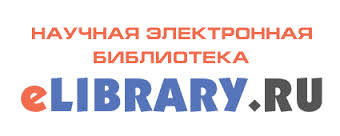THE GENRE OF ANTINARRATIVE IN THE WORK OF MAGOMED-RASUL RASULOV: “THE CLAIRVOYANT FOOLˮ
Abstract
https://doi.org/10.18522/1995-0640-2025-1-129-137
The article analyzes the originality of the genre of Magomed-Rasul's book “The Clairvoyant Foolˮ. Dagestan literature of the 20th century is literature of “eternal themesˮ. The writers sought to answer the difficult questions of existence: about the meaning of life, about the Homeland, about the purpose of man, about the laws of the universe. The Dargin writer Magomed-Rasul Rasulov, a novelist, a literary critic and a playwright, became famous in the 60s of the 20th century, whose works became a significant phenomenon in the literary life of Dagestan. The work of the people's writer of Dagestan Magomed-Rasul Rasulov has become widely known in the republic and in the country as a whole. Almost all the works of the Dargin author have been translated into Russian, and foreign readers are familiar with some of them. Magomed-Rasul Rasulov is equally successful as an author of essays, short stories, novellas and novels. As a person with an active life and social position, Magomed-Rasul Rasulov could not stand aside from the important problems of his time. His works have been repeatedly published on the pages of the center. The relevance of this work is dictated by the fact that the antinarrative “Clairvoyant Foolˮ for the first time becomes the object of special study. The purpose of the research is to consider the problems and artistic features of the work and is implemented by solving the following interrelated tasks: consideration of plot and compositional features, definition of problems and identification of artistic features. The article uses sociocultural, analytical research methods.
Key words: Dagestan literature, Dargin prose, genre, antinarrative, Magomed-Rasul Rasulov, artistic features
Downloads
Published
How to Cite
Issue
Section
License
Copyright (c) 2025 Eminakhanum M. Kurbanova

This work is licensed under a Creative Commons Attribution-NonCommercial 4.0 International License.
Authors who publish with this journal agree to the following terms:
- Authors retain copyright and grant the journal right of first publication with the work simultaneously licensed under a Creative Commons Attribution License that allows others to share the work with an acknowledgement of the work's authorship and initial publication in this journal.
- Authors are able to enter into separate, additional contractual arrangements for the non-exclusive distribution of the journal's published version of the work (e.g., post it to an institutional repository or publish it in a book), with an acknowledgement of its initial publication in this journal.
- Authors are permitted and encouraged to post their work online (e.g., in institutional repositories or on their website) prior to and during the submission process, as it can lead to productive exchanges, as well as earlier and greater citation of published work (See The Effect of Open Access).


















